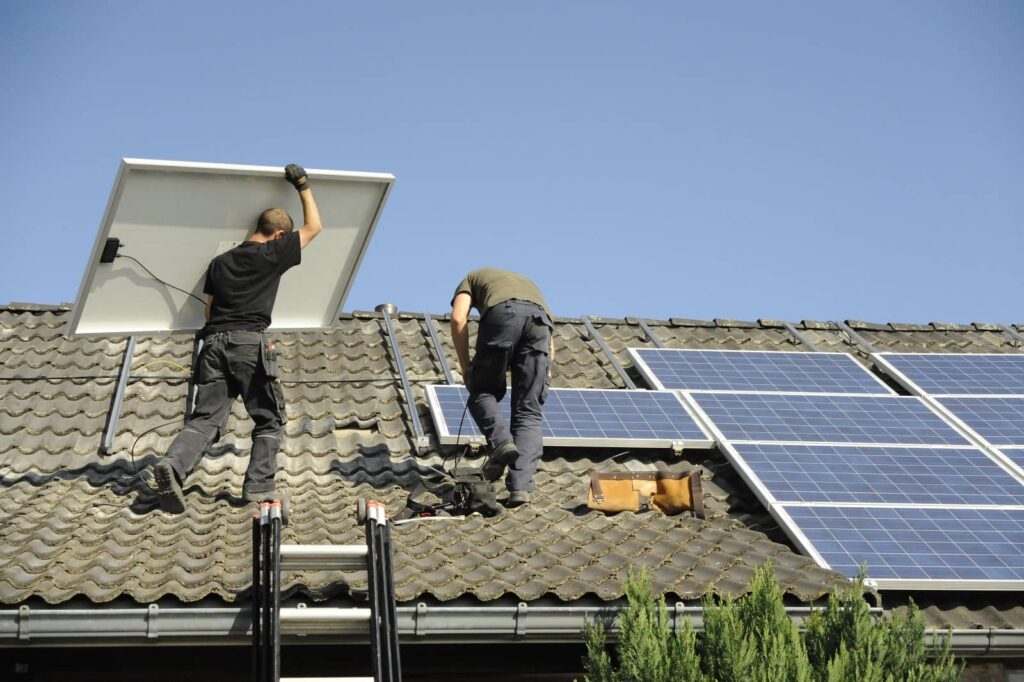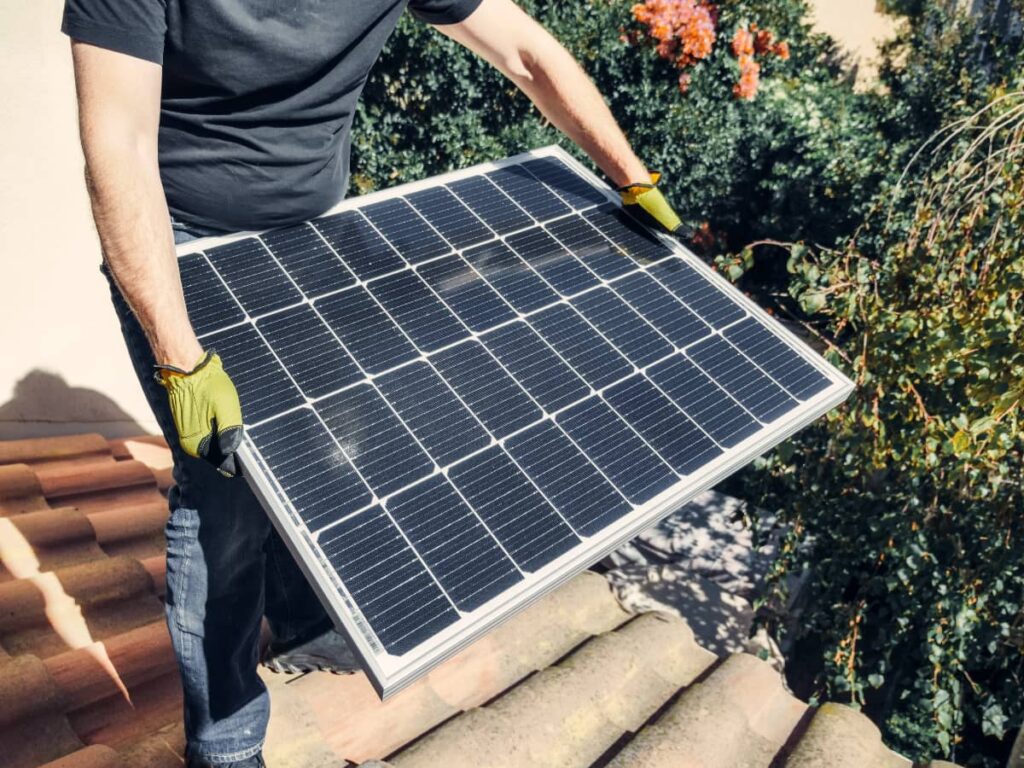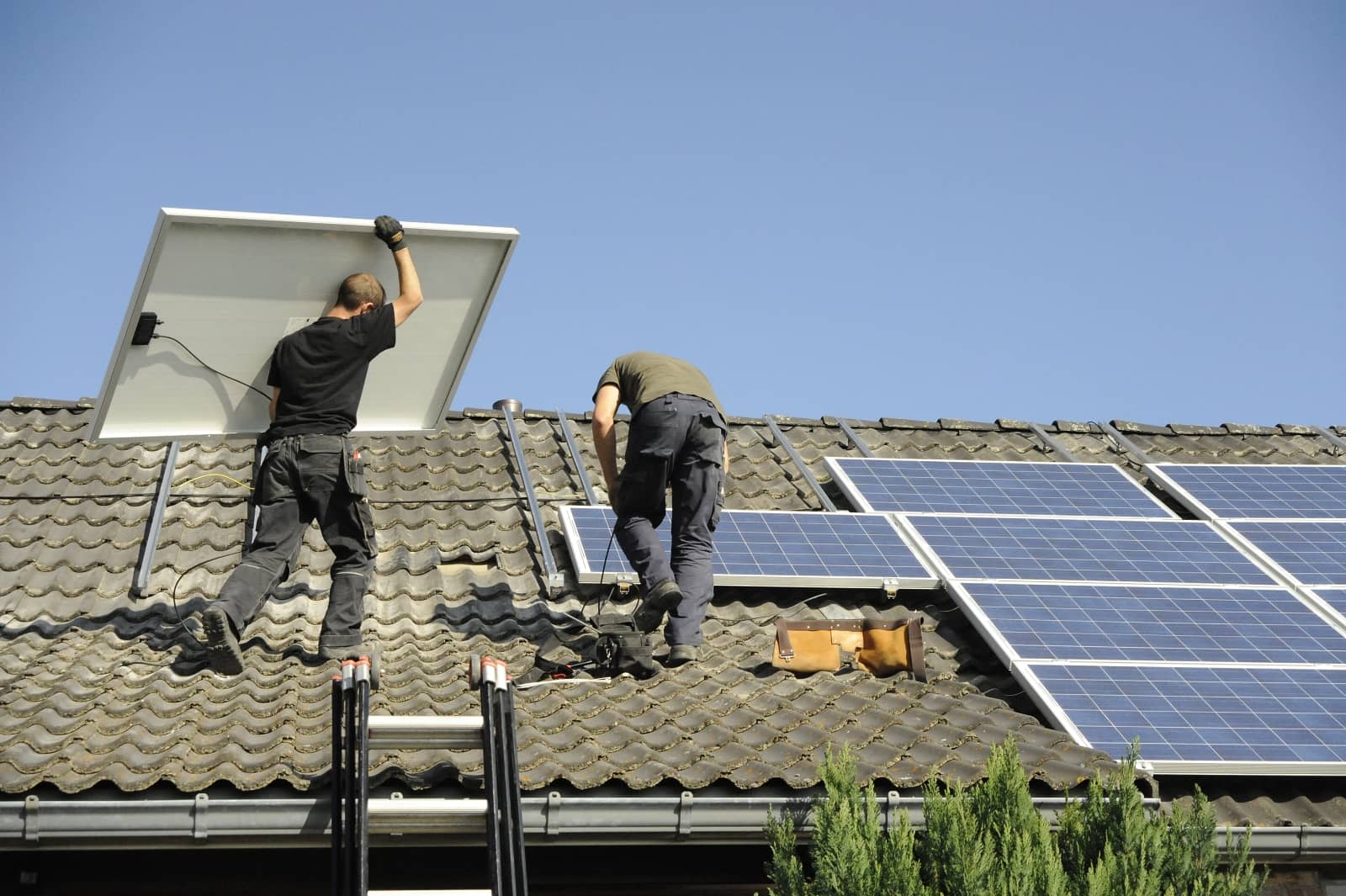In today’s world, where environmental consciousness is on the rise, harnessing renewable energy sources has become a top priority. One such source is solar power. Solar power projects are gaining popularity among homeowners who want to reduce their carbon footprint and lower energy bills simultaneously. In this comprehensive guide, we’ll explore the exciting world of DIY solar power, helping you understand how to harness the sun’s energy for your home.

Introduction to Solar Power
Solar power, also known as solar energy, is the radiant energy emitted by the sun, which can be harnessed and transformed into electricity. This clean and renewable energy source carries a multitude of advantages for both the environment and homeowners. Sunlight, the essence of this energy, is captured by solar panels, typically constructed with photovoltaic cells. These panels work to convert sunlight into direct current (DC) electricity. Subsequently, an inverter plays a crucial role by converting DC electricity into alternating current (AC) electricity, the form that is readily usable within your home.
The choice to embrace solar power is rooted in its sustainability and eco-friendliness. By tapping into the sun’s potential, you can significantly diminish your dependence on fossil fuels, curtail your carbon footprint, and reduce energy costs. Moreover, solar panels boast an extended lifespan, rendering them a valuable and enduring investment for environmentally conscious homeowners.
Benefits of Solar Power
Opting for solar power presents homeowners with compelling reasons rooted in financial, environmental, and energy independence considerations. Primarily, it offers substantial long-term cost savings, although the initial investment can be significant. By embracing solar energy, you actively contribute to a cleaner planet by reducing greenhouse gas emissions, combatting air pollution, and diminishing reliance on non-renewable energy sources. Furthermore, a DIY solar power system grants you newfound energy independence, reducing your dependence on conventional utility companies. On sun-drenched days, you even have the potential to generate surplus energy, which can be sold back to the grid, further trimming your energy expenses and fostering a sense of self-sufficiency.
Assessing Your Home’s Solar Potential
Before diving into a DIY solar project, it’s crucial to assess your home’s solar potential. Several factors determine whether your home is suitable for solar power generation.
Sunlight Exposure
The amount of sunlight your location receives throughout the year directly impacts the efficiency of your solar panels. Ideally, your roof should receive several hours of direct sunlight daily.
Roof Suitability
Your roof’s condition and orientation play a crucial role in solar panel installation. Ensure that your roof can support the weight of solar panels and that it has a suitable angle and orientation for optimal sunlight absorption.
Local Regulations
Check with your local authorities and homeowner’s association for any regulations or permits required for solar panel installation. Compliance with local rules is essential to avoid potential issues in the future.
Choosing the Right Solar Panels
Selecting the right solar panels is a critical step in your DIY solar power project. Consider the following factors when making your choice.
Types of Solar Panels
There are different types of solar panels available, including monocrystalline, polycrystalline, and thin-film. Each type has its advantages and disadvantages, so research thoroughly to determine which suits your needs best.
Efficiency vs. Cost
High-efficiency panels generate more electricity but can be costlier. Balance your budget with your energy generation goals to find the right balance.
Warranty and Lifespan
Solar panels typically come with warranties ranging from 10 to 25 years. Consider the warranty period and the manufacturer’s reputation when making your selection.
Inverters and Batteries
In a solar power system, inverters and batteries play indispensable roles.
Inverter’s Vital Role
Inverters take on the pivotal task of converting the direct current (DC) electricity produced by your solar panels into the alternating current (AC) electricity that powers your home. It’s crucial to select an inverter that aligns with your system’s size and specific requirements, ensuring optimal performance.
Battery Storage Considerations
Batteries serve as reservoirs for surplus energy generated during the day, offering a lifeline during nighttime or cloudy periods when solar panels may not produce electricity. Assess whether integrating battery storage into your setup is necessary, taking into account your energy needs and the local weather conditions you may encounter.
Reliability through Quality and Maintenance
To guarantee the reliability of your solar power system, it’s imperative to invest in high-quality inverters and batteries. Their performance and longevity depend on proper installation and diligent maintenance practices, safeguarding your sustainable energy source for years to come.

Designing Your Solar Power System
Designing your solar power system involves planning the placement of panels and electrical connections.
Panel Placement
Optimal panel placement maximizes energy generation. Consider factors like shading and obstructions when determining the best location for your panels.
Wiring and Electrical Connections
Proper wiring and electrical connections are crucial for safety and efficiency. Consult with an electrician or follow manufacturer guidelines for installation.
Safety Considerations
Safety should always be a priority when working with electricity. Take necessary precautions and consider hiring a professional if you are not confident in your electrical skills.
Installation Process
Now that you’ve assessed your home and selected the components, it’s time to move on to the installation process.
Tools and Equipment
Gather the necessary tools and equipment, including solar panels, mounting hardware, wiring, and safety gear.
Step-by-Step Installation
Follow a detailed installation guide, which should be provided with your solar panels. Ensure all connections are secure, and the system is properly grounded.
Professional Assistance
If you’re not comfortable with DIY installation, seeking professional assistance is a viable option. Licensed solar installers can ensure a safe and efficient installation.
Monitoring and Maintenance
After installing your DIY solar power system, ongoing monitoring and maintenance are essential to keep it operating optimally.
Tracking System Performance
Regularly monitor your system’s performance using online monitoring tools provided by some solar panel manufacturers. This helps identify any issues promptly.
Routine Maintenance
Cleaning your solar panels periodically and inspecting for damage or debris is crucial. Keep the area around your panels free from shading objects.
Troubleshooting Tips
In case of any system malfunctions, refer to your solar panel manufacturer’s troubleshooting guide or contact professional technicians for assistance.
Maximizing Solar Power Generation
To get the most out of your DIY solar power system, consider implementing the following strategies.
Energy Storage Strategies
To optimize your solar power system’s performance, consider implementing energy storage strategies. You can maximize energy storage by adjusting your energy consumption habits. Utilize high-demand appliances during sunny hours to make the most efficient use of the solar energy generated.
Time-of-Use Optimization
Many utility companies offer time-of-use billing, where electricity costs vary throughout the day. To maximize your savings, it’s advisable to optimize your energy use by taking advantage of lower rates during off-peak hours. This entails scheduling energy-intensive tasks and activities when electricity costs are at their lowest.
Selling Excess Energy
If your solar power system generates more electricity than your household consumes, you can explore the benefits of net metering programs in your area. These programs allow you to sell the excess energy your system produces back to the grid, not only reducing your energy bills but potentially providing an additional source of savings and income.
Government Incentives and Tax Credits
Governments often incentivize solar power adoption through various programs.
Financial Incentives
Explore federal and state-level financial incentives, such as rebates and grants, to offset the cost of your solar power system.
Rebates and Credits
Tax credits and rebates can significantly reduce the overall cost of your DIY solar power project. Be sure to research available incentives in your region.
Environmental Impact and Sustainability
Embracing solar power is a meaningful step towards fostering a more sustainable future. This commitment entails a dual-pronged approach. Firstly, solar power plays a pivotal role in curbing our carbon footprint. By harnessing the sun’s energy, we significantly diminish greenhouse gas emissions, thereby contributing to the global effort to combat climate change. Secondly, solar power stands in stark contrast to fossil fuels, as it generates electricity without producing harmful emissions or contributing to the pollution of our air and water. This eco-friendly approach to energy generation not only safeguards the environment but also paves the way for a cleaner and healthier planet for generations to come.
Is DIY Solar Power Right for You?
Choosing solar power for your home reduces greenhouse gas emissions, air pollution, and dependence on non-renewable energy sources. It’s a proactive step towards a greener planet. To explore how you can make this eco-friendly choice a reality, consider reaching out to experts in your area. Companies specialize in helping homeowners embrace solar energy solutions that benefit both the environment and your wallet.
Assessing Your Goals
In embarking on the path of DIY solar power, it’s essential to begin by evaluating your objectives. Clarify your primary motivations, whether they revolve around achieving significant cost savings, making a positive environmental impact, or attaining energy independence. By pinpointing your goals, you can tailor your solar power project to align perfectly with your aspirations.
Budget Considerations and Time Commitment
Simultaneously, it’s crucial to address the financial and temporal aspects of your endeavor. Establish a comprehensive budget that encompasses all potential expenses, including the procurement of equipment, necessary permits, and the costs associated with installation. Furthermore, recognize that the installation of a solar power system is a time-intensive undertaking. Ensure that you possess both the time and unwavering commitment required to oversee the project to its successful completion. This holistic approach to assessment and planning will pave the way for a rewarding and well-executed DIY solar power project.
Common Challenges and Solutions
Confronting challenges is an inherent aspect of the DIY solar power journey. Shading issues, stemming from trees or nearby structures, can affect energy generation. Mitigating this involves tree trimming or fine-tuning panel placement to minimize shading’s impact. Additionally, while solar panels are designed to endure diverse weather conditions, the occasional maintenance may be needed, especially following severe storms.
Furthermore, as technology advances, you might consider system upgrades to enhance your solar power efficiency and capabilities. Consulting with professionals is advisable when delving into potential upgrades to ensure you stay at the forefront of solar energy innovation.
FAQs (Frequently Asked Questions)
The cost varies depending on factors like system size and location but can range from $5,000 to $15,000 or more.
Yes, many governments offer tax credits and incentives to promote solar power adoption.
Net metering allows you to sell excess electricity generated by your solar panels back to the grid, potentially reducing your energy bills.
While DIY installation is possible, hiring a professional ensures a safe and efficient setup.
Solar panels often come with warranties of 25 years or more, and their lifespan can extend beyond that with proper maintenance.
Solar panels can be installed on most roof types, including shingle, metal, and tile roofs. However, the condition and orientation of your roof may affect the efficiency of your solar panels.
The time it takes to recoup your investment varies based on factors such as your energy consumption, local electricity rates, and available incentives. In many cases, homeowners can see returns in 5 to 10 years.
Routine maintenance for solar panels includes cleaning, inspecting for damage, and ensuring that panels remain free from shading objects. It’s relatively low maintenance compared to other home systems.
While regions with less sunlight may have lower energy production, solar power can still be a cost-effective and sustainable option. Evaluate your energy needs and available sunlight to make an informed decision.
